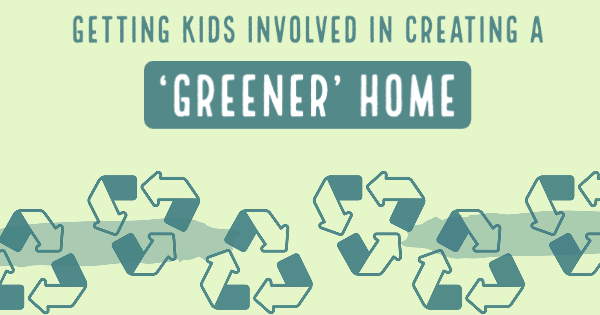
You may be living a “green” lifestyle as an adult, but are you remembering to teach these values to your children? It’s easy to get into a routine, but it’s important to involve your kids in the things that are important to you. Chances are, your kids will also be interested in doing things that save energy, reduce waste, and protect the earth. Let’s look at a few ways you can get your whole family involved in creating a “green” household.
Stress the Importance of Saving Water
It sounds incredible, but it’s true: the average family in the U.S. uses more than 300 gallons of water every day at home. That’s almost enough to fill a standard hot tub. Fortunately, there are a few small steps everyone in the family can take to reduce water waste.
Brushing Teeth
Most dentists agree that proper tooth brushing takes at least two minutes. But keeping your faucet running for two whole minutes is a huge waste — all that water just ends up down the drain. Remind your kids to shut the faucet off while brushing.
Showers and Baths
Dermatologists say that the average shower should last between five and 15 minutes, and in fact, shorter, cooler showers are actually healthier for your skin and hair. And when it comes to baths, you don’t need to fill the bathtub to get a proper washing. The average bath uses 35 to 50 gallons of water, but smaller children require much less water — only fill it as high as you need to get a good rinse.
Laundry
Depending on the type of washing machine your family owns, laundry could be draining your home’s water. A standard washing machine uses 40 gallons per load while most high-efficiency washers use only 15 to 30 gallons. Your children may not be old enough to do their own laundry, but they can have some control over what goes in. Remind your kids that not every article of clothing needs to be washed after one wear — things like jeans and jackets can be worn multiple times between washes, as long as they aren’t particularly smelly or soiled. Socks and underwear, on the other hand…those should go straight into the hamper.
Demonstrate How to Monitor Energy Usage
Your kids may not have much control over the thermostat, but it’s never too early to learn about the importance of monitoring indoor energy usage.
Lighting
According to the Department of Energy, the average American home spends 5% to 10% of its budget on lighting alone. Encourage kids to turn off lights during the day and when they leave a room. Rather than use electricity, they can open their shades or curtains to let natural light in.
Heating and Air Conditioning
The Department of Energy reports that over half of a typical home’s energy goes towards heating and cooling. And about 30% of a home’s heating energy is actually lost through windows. Teach kids to keep the windows closed when the heat or air conditioning is running.
Electronics and Appliances
Kids today love their screen time, but electronics can be a major energy drain. When it’s time to put the games away or their favorite TV show has ended, kids can help reduce energy usage by shutting down the electronics. According to a study by Iolo Labs, you can save about $2 a month in energy usage when you put your PC to sleep overnight. And, as a general rule, you should turn off your computer monitor if you are going to be away from it for 20 minutes or more. Another way kids can save energy is by choosing a snack before opening the refrigerator door. Keeping the door open while you decide what you want to eat can account for 7% of the appliance’s total energy use, according to Home Energy Magazine.
Reduce, Reuse, Recycle!
You’re familiar with the Three Rs, and your kids probably are, too. But how well do you actually implement them at home?
1. Reduce Waste
Start with replacing disposable containers with reusable ones. Instead of relying on disposable plastic water bottles, give each kid their own reusable bottle to keep with them at all times. Kids can also reduce waste by finishing all the food on their plate and only using the materials they need to complete school and art projects.
2. Reuse Materials
If your child does have an art or school project with materials leftover, don’t throw them away! Store them for the next time. You can also teach them how to reuse water by filling a bucket with their bathwater and tending to a lovely garden.
3. Recycle What You Can
Finally, make sure you keep your recycling bin in a spot accessible to the kids. Teach them which items are recyclable and which are rubbish. If you take a weekly or monthly trip to return bottles and cans, bring the kids with you and show them where the items go.
These are just a few of the great ways to instill in your children the importance of living an environmentally-friendly lifestyle at a young age.

Speak Your Mind